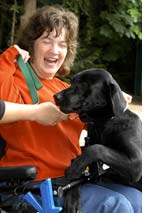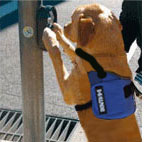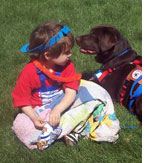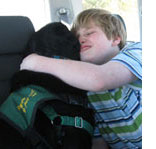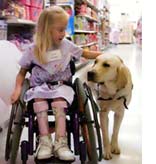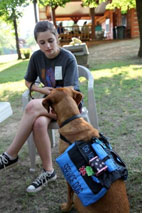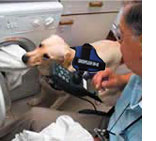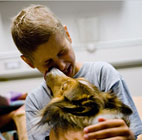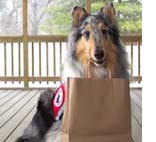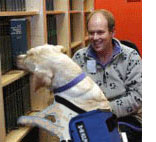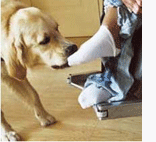An assistance dog is a dog who has learnt to help an individual with a disability to carry out the daily activities, or who is able to warn the individual with certain disabilities in advance or to warn help services.
Every assistance dog has a number of basic skills. BultersMekke thinks it important to complete these with those skills that connect with the disabilities and needs of the student. These additional skills oriented at the individual are determined in mutual consultation.
Besides the practical support, an assistance dog is also important in the socio-emotional field. We use this in our programme.
Because of an assistance dog people are able to lead an as independent life as possible, starting from what is possible and not focusing on the disability.
The way in which BultersMekke interprets the team coaching programme also provides an enhancement of the self-help and self-respect.
For every person with a disability, BultersMekke has a programme to train a personal Assistance dog.
Dogs for children with a form of autism.
A dog for children with autism is trained to fully focus on the child. The dog offers safety and is a buddy through and through, who lets himself be stroked and cuddled, even if that action is sometimes a bit rough. During rage or fright, the dog will go to the child to support it in this, because of which the child will recover more and more quickly from this emotion and in the long term even manage to decrease the fits.
The specially trained relation with the dog evokes more self-respect in the child, enabling it to more easily make contacts outside the safe borders. The communicative skills can be increased because the dog may stimulate the child to talk.
With children who tend to run away, the dog may block the child and thus help it stop and get it back into the here and now.

ADL-dog
The abbreviation ADL stands for Activities in Daily Life. An ADL-dog is trained to assist someone with a physical disability with all kinds of actions in daily life. For example, this assistance dog can open doors, push a lift button, turn on the light, pull off clothes and pick up items from the floor.
Signal dog
A signal dog is trained for someone with an auditive disability and warns his master for all kinds of sounds. Among other things, he reacts to the sound of an alarm, doorbell, alarm clock, microwave or to a baby’s crying.
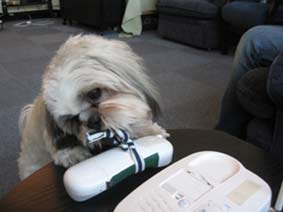
Seizurehond (seizure means (epileptic) attack)
The activities of the seizure dog aim to prevent unsafe situations and to alarm before, during or after an attack. Living and working with a seizure dog gives more independence, a greater feeling of safety and freedom of movement. Practice has shown that people with a seizure dog are or become more confident by working with their dog.
These assistance dogs , if necessary, can put the person in a desirable position after an epileptic attack. After having called in help by pushing an emergency button, the dog lies with the person to reassure him or her at the moment (s)he recovers from the attack. All day, the seizure dogs keep an eye on the person with whom they live.
They are also able to get medication.
We hope that they also learn to sense when their master is getting an epileptic attack. This may prevent people from falling down hard when they suddenly collapse. When the dog senses an attack is imminent, he may warn his master, for example by looking at him, to quietly remain seated.

Diabetes assistance dog (hypodog)
A diabetes assistance dog is specifically trained in the timely detection and warning against an imminent problem situation with too low (hypo) a blood sugar level, by timely starting to bark, howl, yawn or by licking the diabetic.
Then, there is enough time to restore the blood sugar level.

Assistance dogs for people with a psychiatric condition
These dogs can contribute to the improvement of the well-being and the mental health of people. Living and cooperating with a dog give more structure, provide exercise, may fight loneliness and promote social contact. Living with a dog involves a sense of responsibility and can enhance the feeling of self-esteem. Important aspect in the team coaching programme is that the care and the welfare of the dog are well guaranteed in consultation with the owner.
Research into the therapeutical effect of pets in the Netherlands is limited. Abroad, they are further advanced with that. Contact with dogs can work positively, even if people do not own a dog themselves. Here, you may think of various forms of AAT (Animal Assisted Therapy), in which dogs may be used to support a certain therapy.
With each individual application, the best fitting training course will be chosen.


